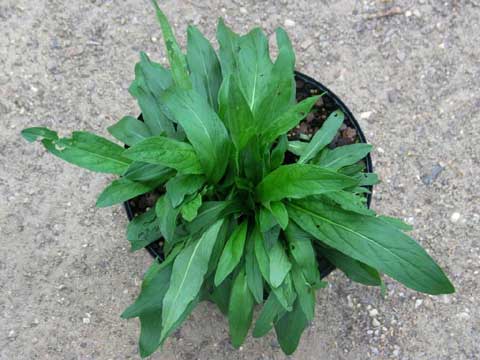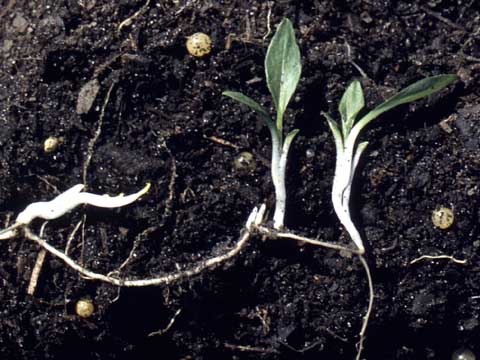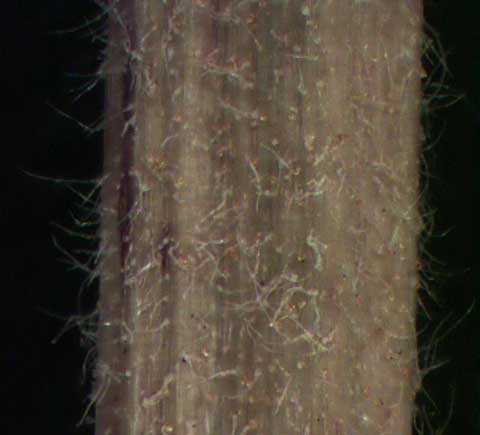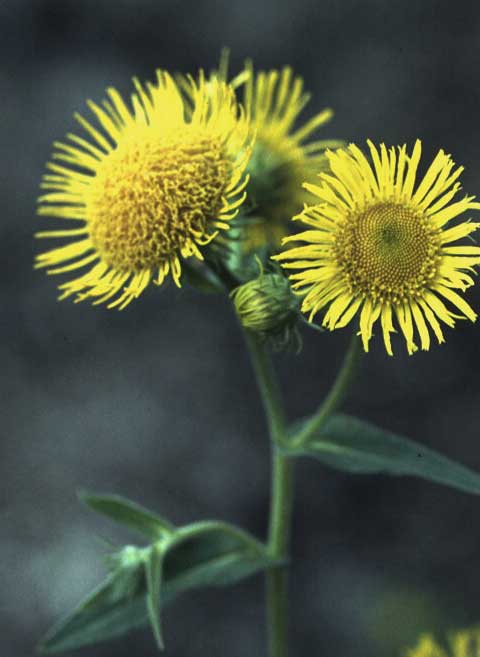British Elecampane / British Yellowhead / Meadow Fleabane
Herbicide Effectiveness [top]
Key to Rankings
Barricade/Regalkade
P**
Broadstar
P**
Gallery
P**
OH2
P**
Pennant Magnum
P**
Pendulum
P**
Regal OO
P**
Ronstar
P**
Rout
P**
Showcase
P**
Snapshot TG
P**
Surflan
P**
Treflan
P**
Description [top]
Inula (Asteraceae) is a very recent introduction to North America. A native of Europe, this creeping perennial weed has been introduced to several nurseries in contaminated hostas and daylilies from the Netherlands. Once introduced, the plant spreads aggressively by thick, fleshy roots that produce new shoots. Plants form rosettes of long, thin leaves that resemble some asters or fleabanes. The leaves also resemble buckhorn plantain leaves except plantain leaves have five distinct parallel veins; Inula leaves have netted veins. Leaves are 3 to 10 inches long and about ½ to 1 inch wide. Leaves remain green through the winter. Plants require a chilling period to flower. In the spring plants spread rapidly, then in early to mid-summer flowering stems begin to elongate. Plants produce attractive, typical aster-like flowers, yellow to light orange in color. It is unclear whether or not the species produces viable seeds in North America. Because the plant primarily reproduces vegetatively, preemergence herbicides commonly used in nurseries are not effective. It is nearly impossible to remove all of the Inula root pieces; consequently, any plants infested with Inula should be destroyed before the weed can spread. [TOP]



